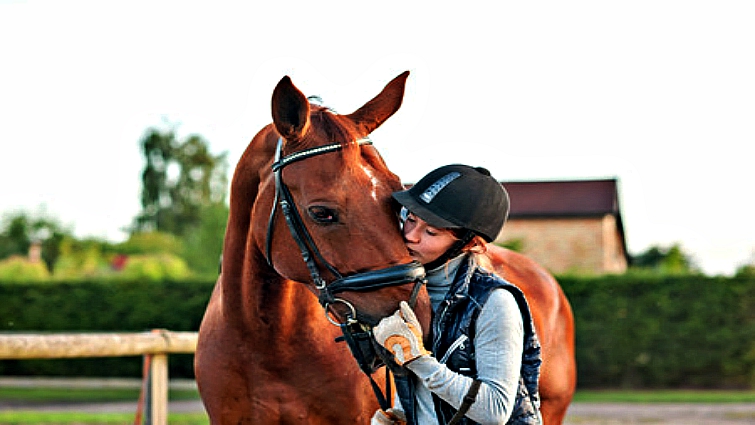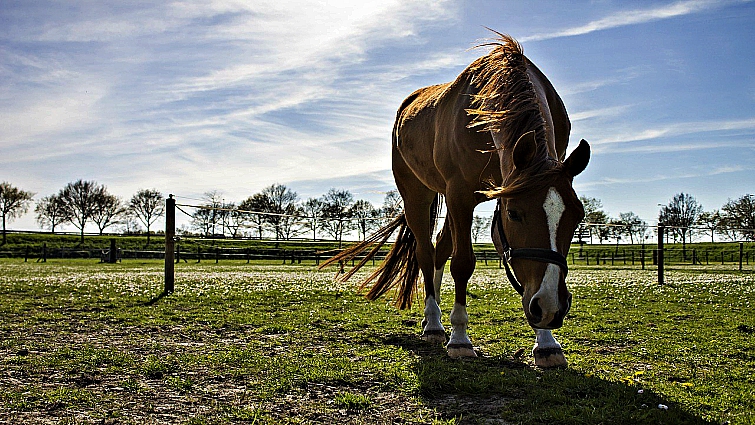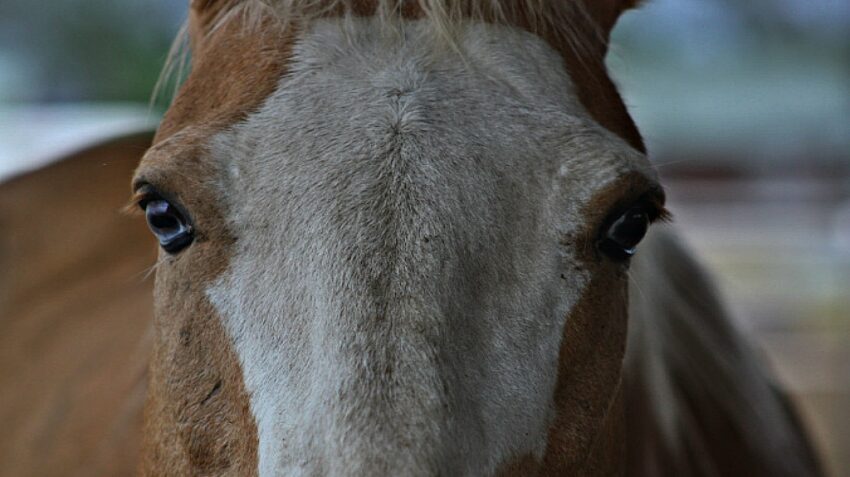1) Ears: One of the first things kids learn when they start riding horses is to always check the horse’s ears to get a read on their mood. Horses have incredibly expressive ears, and they’re easy to read, which is why this is an important lesson for everyone, equestrian or not! If a horse’s ears are alert and perked slightly forward, they’re active, interested, and possibly a bit excitable. If their ears are relaxed and drooping to the front or sides, they’re comfortable and content, and possibly sleepy. If a horse’s ears are pinned back flat to the head, that horse is scared or angry.

2) Neck And Head: A horse who has his head lowered down and hanging in front of his chest is very relaxed, possibly to the point of being all the way asleep! On the other hand, a horse who has his head sharply raised is probably startled or alert — horses will sometimes lift their chins if they’re spooked or in sudden pain, or if they’re focusing intently on something.

3) Muzzle. An angry horse will open his mouth wide and might pull back his top lip to show his teeth to warn you to stop whatever you’re doing, or he’s going to bite. A happy, mentally engaged horse will chew, even if he doesn’t have anything in his mouth! That’s a sign that he’s thinking through a problem or focusing on something. And a horse who is experiencing something new and is confused or curious will show his feelings by flaring his lips back and rolling them around as he tries to identify a new smell or stimulus!

4) Eyes. The most important warning sign to watch out for is if you can see the whites of the horse’s eyes — that means he’s opening them much wider than usual and he’s upset, scared, or angry and trying to intimidate the object of his emotions. A horse that’s nervous and considering a disappearing act will dart his eyes back and forth rapidly, which is a good tell if you have a Houdini on your hands. If the horse’s eyelids are drooping, and he’s looking half-lidded, he’s extremely content, and probably has a belly full of a tasty dinner!

